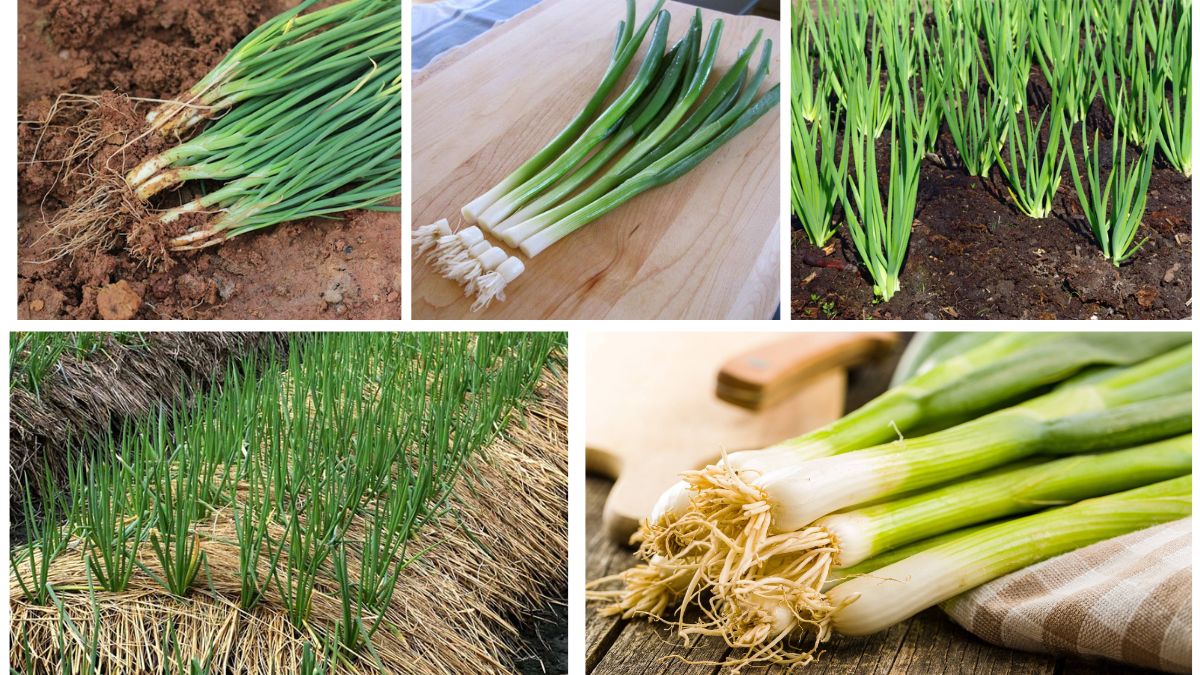Green onions, also known as scallions or spring onions, are a staple in kitchens worldwide. They add fresh flavor, crisp texture, and vibrant color to salads, soups, stir-fries, and garnishes. Unlike regular onions that require months to mature, green onions can be harvested quickly and continuously, making them perfect for home gardens, small spaces, or container cultivation.
Growing green onions at home is simple, cost-effective, and highly rewarding. With minimal space and care, you can enjoy a steady supply of fresh, flavorful greens all year round. This guide provides a step-by-step approach to growing green onions for a continuous harvest, including varieties, planting techniques, care practices, and harvesting methods.
Why Grow Green Onions at Home?
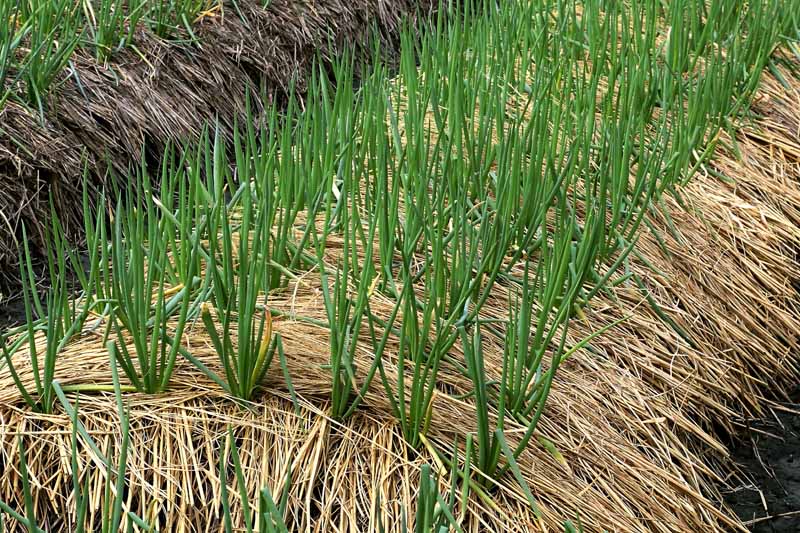
Homegrown green onions provide multiple advantages:
- Continuous Harvest: Regular cutting encourages regrowth for ongoing supply.
- Freshness and Flavor: Green onions picked at the right time are far more aromatic and flavorful than store-bought.
- Cost-Effective: Growing at home reduces grocery expenses and ensures a fresh supply without frequent store visits.
- Versatile Gardening: Suitable for backyard gardens, raised beds, hydroponics, or container gardening.
- Pesticide-Free: You control the growing conditions, allowing organic cultivation.
Step 1: Choosing the Right Green Onion Variety
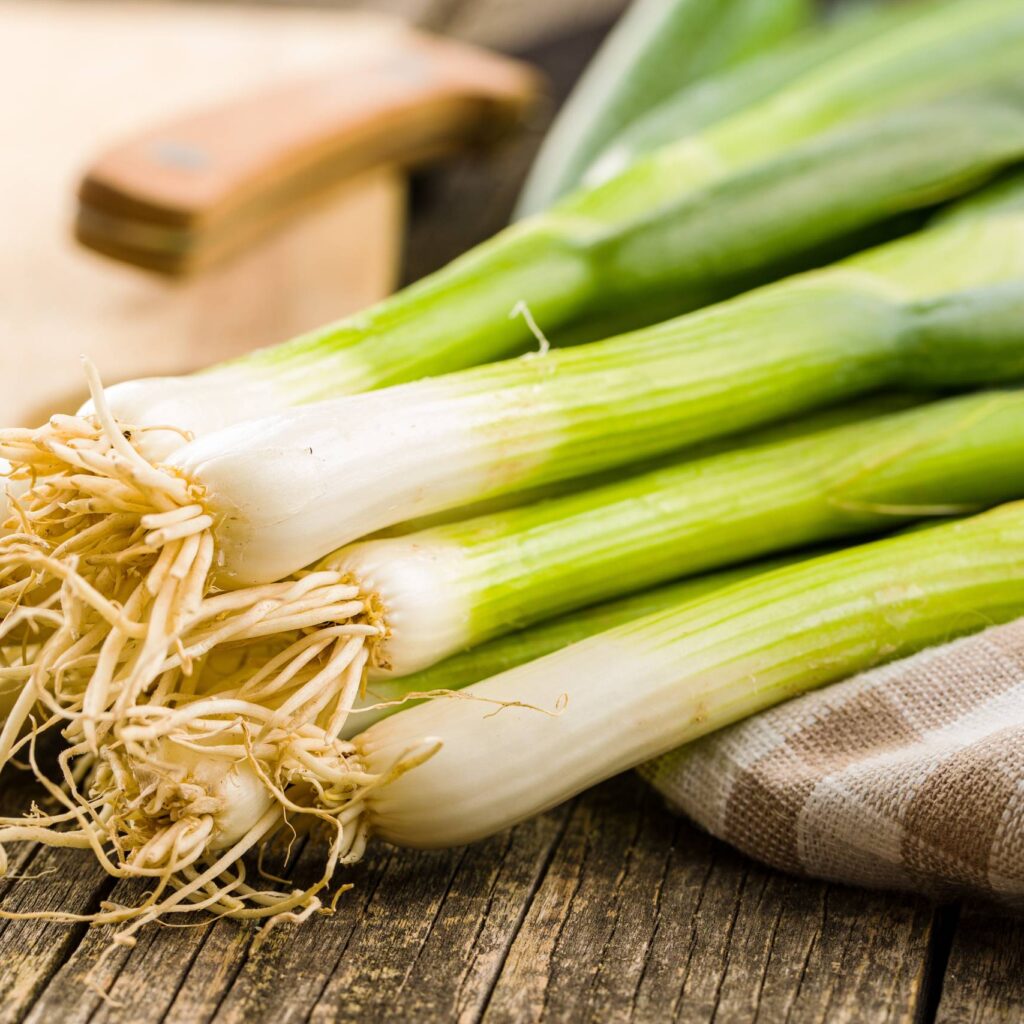
Green onions come in various types suited for different climates and culinary preferences:
- Evergreen Bunching: Forms clusters of slender green stalks with mild flavor. Ideal for continuous harvest.
- White Lisbon: Produces long white bulbs and green tops. Great for cooler climates.
- Tokyo Long White: Long, crisp stalks with mild taste, perfect for stir-fries.
- Red Bunching: Adds a colorful twist with red-tinted stems and white bulbs.
Selecting the right variety depends on your climate, garden space, and desired harvest method. For a continuous supply, bunching types are most recommended.
Step 2: Preparing Soil for Green Onions
Green onions thrive in fertile, well-drained soil with consistent moisture. Proper soil preparation promotes strong root development and continuous regrowth.
- Soil Type: Light loam or sandy soil enriched with organic matter works best.
- pH Level: Aim for 6.0–7.0 for optimal growth.
- Soil Enrichment: Incorporate compost or aged manure to provide essential nutrients.
- Bed Preparation: Loosen soil to a depth of 6–8 inches to encourage healthy root formation.
Raised beds or containers with nutrient-rich soil are also excellent for consistent growth.
Step 3: Planting Green Onions
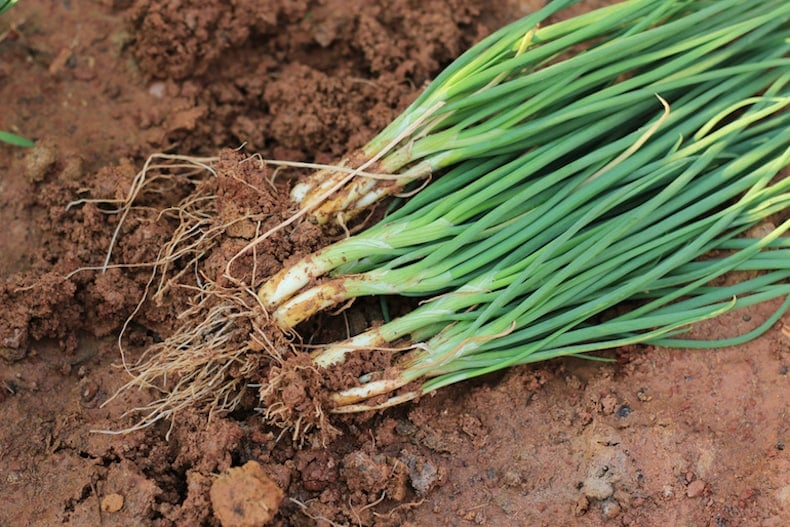
Green onions can be grown from seeds, sets, or kitchen scraps, allowing flexibility for beginners and experienced gardeners alike.
Planting from Seeds
- Sow seeds directly in the soil or in seed trays ¼–½ inch deep.
- Space seeds 1–2 inches apart in rows 6–12 inches apart.
- Keep soil consistently moist until germination, which occurs in 7–14 days.
Planting from Sets or Bulbs
- Small onion bulbs (sets) can be planted directly in the garden.
- Plant 1 inch deep with tips pointing upward, spaced 1–2 inches apart.
- Water gently and keep soil moist.
Regrowing from Kitchen Scraps
- Cut the white root end of used green onions, leaving about 1–2 inches.
- Place in a small glass of water with roots submerged.
- After 7–10 days, roots and green shoots will regrow.
- Transplant into soil or continue growing in water for ongoing harvest.
Step 4: Sunlight and Watering Requirements
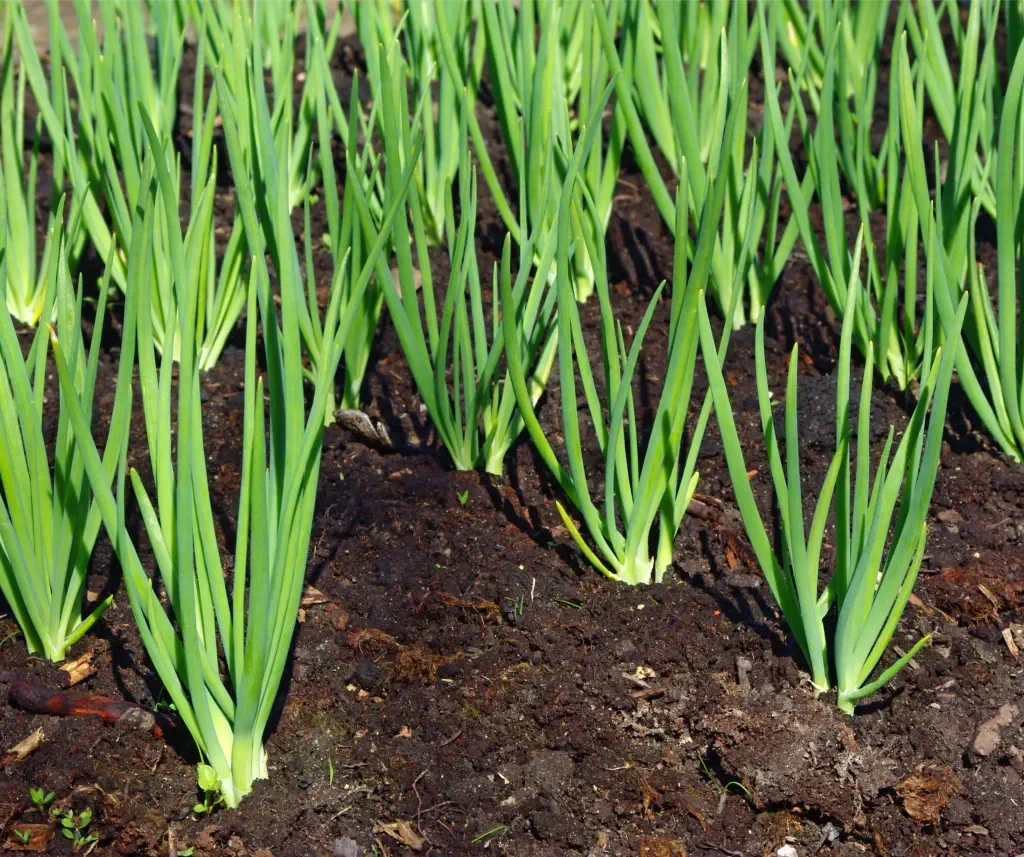
Green onions thrive under full sun to partial shade, needing at least 6 hours of sunlight daily for optimal growth.
- Watering:
- Maintain consistently moist soil without waterlogging.
- Mulch around the plants to retain moisture and regulate soil temperature.
- Container Gardening: Ensure proper drainage to prevent root rot.
Step 5: Fertilization and Care
Green onions require moderate feeding to sustain continuous growth.
- Fertilization:
- Use a balanced, water-soluble fertilizer every 2–3 weeks.
- Nitrogen-rich fertilizer encourages lush green tops.
- Weeding: Remove competing weeds to ensure proper nutrient absorption.
- Pest Management: Green onions are generally hardy but may attract aphids or thrips. Use organic pest control methods such as neem oil or insecticidal soap.
Step 6: Continuous Harvesting Techniques
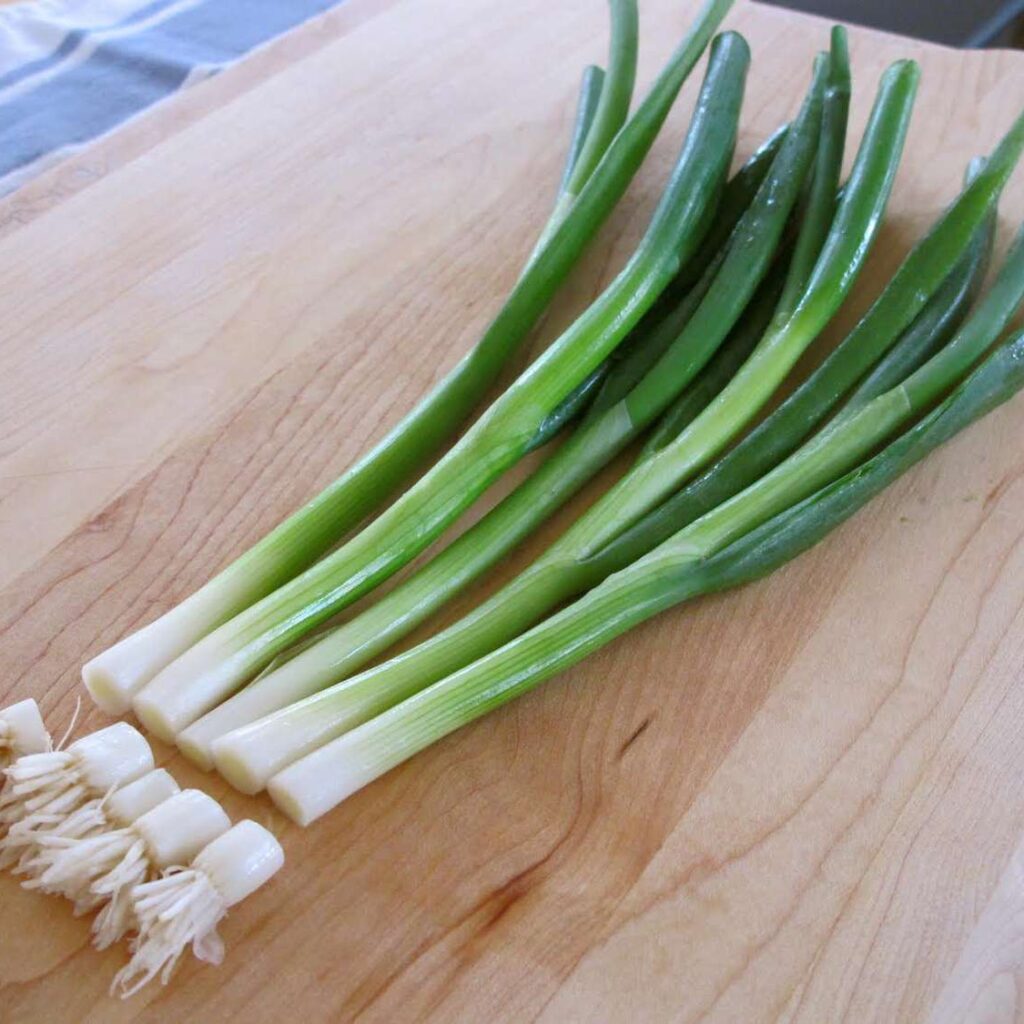
One of the most attractive features of green onions is their ability to regrow after harvesting.
- Cut-and-Come-Again Method:
- Snip green tops about 1–2 inches above the soil surface.
- Leave the white bulb and roots intact.
- New shoots will regrow within 7–10 days.
- Successional Planting:
- Sow seeds or plant sets every 2–3 weeks to ensure a steady supply.
- This creates a rolling harvest, providing green onions year-round.
Step 7: Container and Indoor Gardening
Green onions are ideal for small spaces and indoor gardening:
- Container Size: Use pots at least 6–8 inches deep.
- Light: Place near a sunny windowsill or under grow lights for 6–8 hours daily.
- Hydroponic Growth: Green onions grow exceptionally well in water or hydroponic setups, offering fast and continuous production.
Indoor cultivation ensures access to fresh green onions regardless of season or climate.
Step 8: Troubleshooting Common Problems
- Yellowing Leaves: Usually caused by overwatering or nutrient deficiency. Adjust watering and apply balanced fertilizer.
- Pests: Aphids, thrips, or onion maggots may appear. Regularly inspect plants and treat with organic remedies.
- Slow Growth: May result from insufficient sunlight or compacted soil. Thin seedlings and ensure proper light exposure.
Tips for Maximum Yield
- Maintain consistent moisture and avoid water stress.
- Regularly harvest to encourage continuous regrowth.
- Rotate crops to prevent soil-borne diseases.
- Use companion planting with carrots, lettuce, or beets for mutual growth benefits.
- Ensure proper spacing for airflow and nutrient access.
Conclusion
Growing green onions at home is a simple, low-cost way to enjoy a continuous supply of fresh, flavorful greens. By selecting suitable varieties, preparing nutrient-rich soil, practicing proper planting techniques, and following consistent care and harvesting methods, you can maintain a thriving green onion patch year-round.
Whether in a garden bed, raised bed, container, or hydroponic setup, green onions offer convenience, taste, and nutritional benefits. The cut-and-come-again method, combined with successive planting, ensures your kitchen always has a fresh supply of this versatile vegetable.
With patience and attention to detail, homegrown green onions can become an indispensable part of your cooking and garden routine, providing color, flavor, and health benefits every day.
